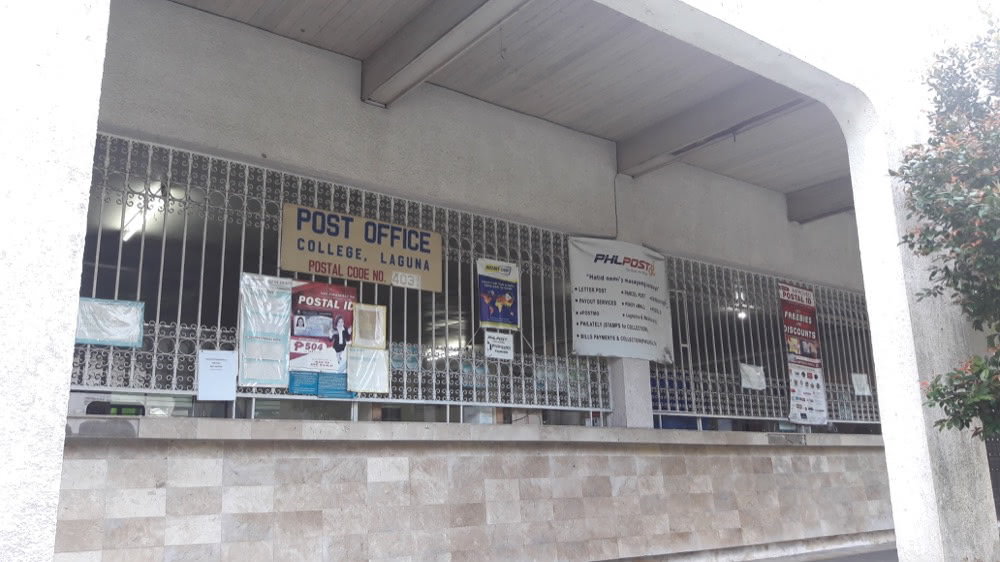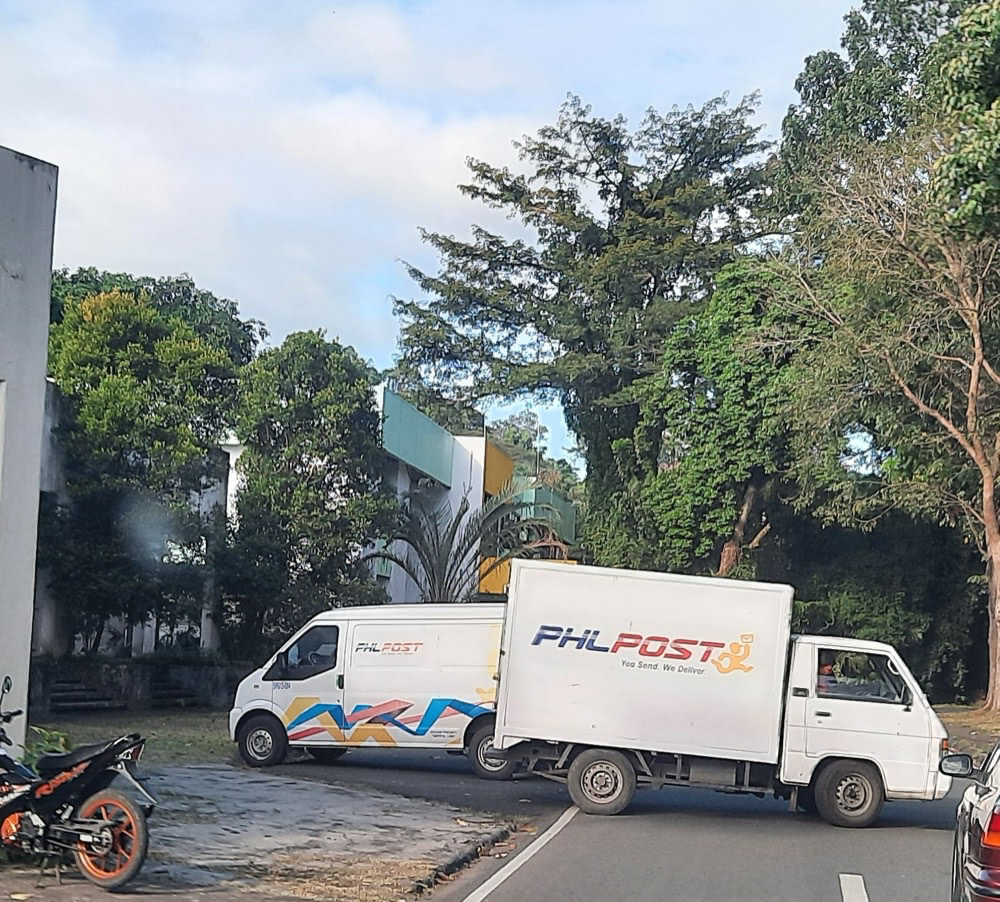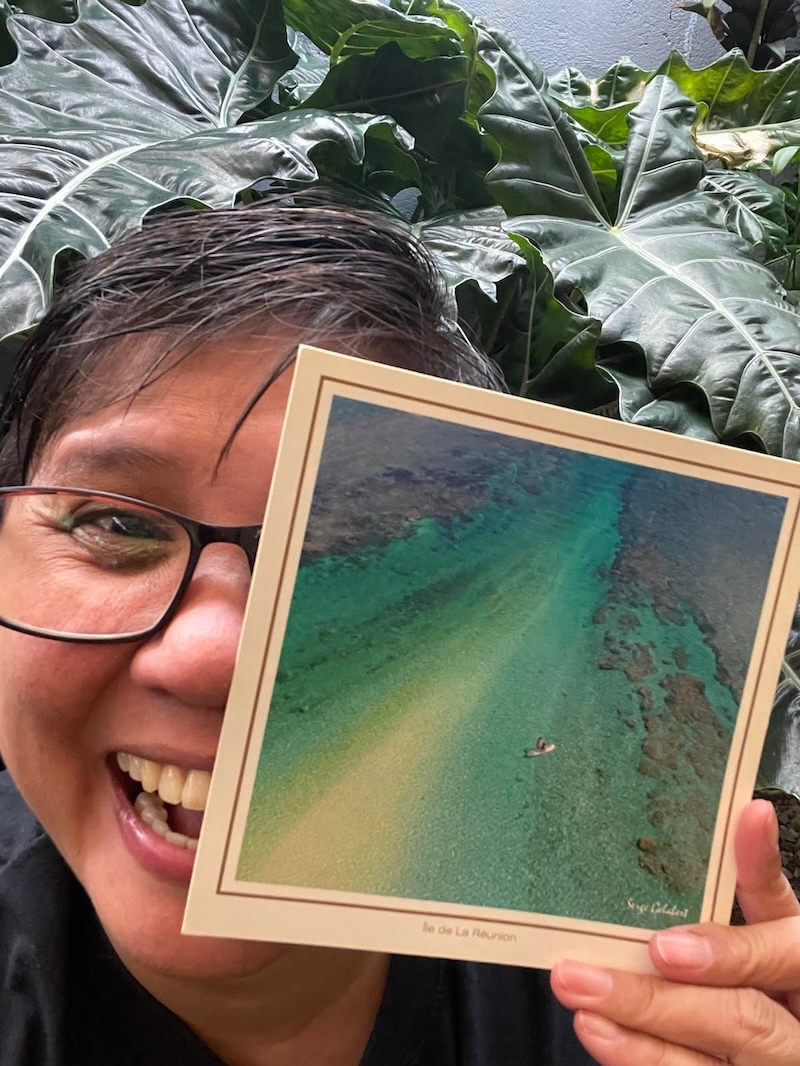Growing up in a small town in Mindanao with no postcards for sale, Leila (aka LeilaKewl) first discovered the wider world through QSL cards from faraway radio stations. These days, Postcrossing, a friendly campus post office, and an ever-growing pile of mail from surprising places make her happy and connected to the world beyond social media. We talked to her about all of this in the latest spotlight interview!
- How did you get started sending postcards? What is your earliest memory of them?
-
My earliest memory of holding a postcard in my hand was when my parents received one from a friend overseas. The random street scene of other cities or desert landscape of other countries looked so exotic to my eyes, which had only seen our tiny town in the hinterlands of Mindanao island!
In my high school days, and still living in that tiny town, I got into shortwave radio listening, and I would send SINPO reports to radio stations. In acknowledgement of my report, they would send me a QSL card – actually postcards from their location. So I got cards from Saigon, Moscow, Washington DC, Sydney, Guam, Tokyo, etc.
Later on, when I got the chance to go to other places, I would buy postcards to keep as my picture-souvenir of the scenes I had seen, because I knew that my small, rectangular 110 camera would not have enough flash power to capture the details of such bright, beautiful places.
Finally, I actually started sending postcards when I stayed overseas as an exchange student for a year, to send a quick “Hello! I’m still alive” note and to show family and friends where I had been or what I had seen.
- How did you come across Postcrossing? What got you hooked?
-
One day, I saw my friend Mysnia88 reading through a bunch of postcards she received. As I have always been interested in mail and postage stamps, I got curious and took a peek over her shoulder as she read them (with permission, of course). I was amazed by the variety of countries the cards came from and the beautiful postage stamps attached.
She told me about the Postcrossing website. I checked it out, signed up and, as they say, the rest is postcard-HERstory!
- Show us your mailbox, your mailman/mailwoman, your post office or the place where you post or keep your postcards!
-

Although there is a mailbox outside our home, I prefer to use my workplace’s address. Since I work in the University, it has its own post office inside the campus that makes it convenient for me to drop by regularly.

Since starting Postcrossing, I have developed good relations with the small postal staff of 2–3. They actually set aside my mail and prop it up on their table for the daily exchange — when I come around to send mail, they hand me over my incoming mail. One could say that I am my own mail-folk!
- What is it your favorite part of the Postcrossing process?
-
It is difficult to pick the favorite part because I enjoy the whole process of Postcrossing. If really pressed to say the favorite part, maybe it would be seeing a slant at the end of the blue bar of travelling postcards… because it means that I can finally click the red “Send a postcard” button!
And then I can start the whole process of reading the recipient’s profile, adhering to their preferences of card theme and writing prompt, actually putting together a postcard, and mailing it.
But definitely, I look forward to reading and appreciating everyone’s notes written on my received cards, and the recipient’s thank-you note in the email.
- Have you been surprised by any place that you have received a postcard from or sent a postcard to?
-
Yes. As I am a fan of tennis player Andre Agassi, I have known for a long time that he has a connection to Georgia (not the one in the USA). So, when I received my one and only card from that country, I was tickled pink by it… although of course that thread of connection between the postcard and Mr. Agassi is barely there. :-)
However, I have been most surprised to receive a card (RE-4563) from a territory I did not know existed – Réunion!

As with most, I looked at the image first and thought it might be an atoll in the Pacific. Then I saw the postage stamp, which was the familiar Marianne of France and was a bit puzzled at the idea of an atoll in France. Afterwards I read the message, written in an “European-looking writing”, found the Postcrossing ID “RE” and thought it must be a mistake. But there are only 4 digits, so maybe it is legit…? RE – where is that?!
The card made me research about Réunion, its location, history, etc. Now, I want to visit Réunion!
- What’s one way that postcards have changed your life for the better?
-
Postcard exchange, or Postcrossing, has made me realize how connected we all are. Even if I don’t travel to see much of the world, and my social media feed is limited to my corner of the world, the postcards show me that there is so much more out there and yet, we all have the same aspirations, and we are so alike more than we are different. It has also made me more prayerful, surprisingly.




.jpg)






.jpg)
.jpg)






























 Quite a few actually! I’ve helped my two sons, aged 8 and 12, sign up on the website, because they decided they wanted to received postcards of their own. And then lots of my fellow bloggers got curious when I shared my sent and received Postcrossing cards on Facebook, so they ended up signing up as well.
Quite a few actually! I’ve helped my two sons, aged 8 and 12, sign up on the website, because they decided they wanted to received postcards of their own. And then lots of my fellow bloggers got curious when I shared my sent and received Postcrossing cards on Facebook, so they ended up signing up as well. 